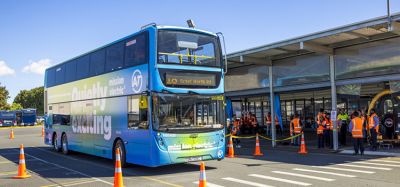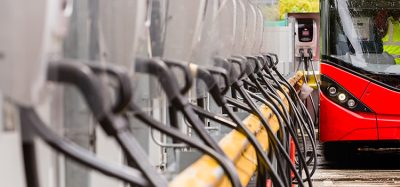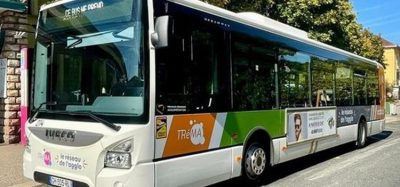Intelligent Transport’s Leaders’ Series 2017: Umberto Guida
- Like
- Digg
- Del
- Tumblr
- VKontakte
- Buffer
- Love This
- Odnoklassniki
- Meneame
- Blogger
- Amazon
- Yahoo Mail
- Gmail
- AOL
- Newsvine
- HackerNews
- Evernote
- MySpace
- Mail.ru
- Viadeo
- Line
- Comments
- Yummly
- SMS
- Viber
- Telegram
- Subscribe
- Skype
- Facebook Messenger
- Kakao
- LiveJournal
- Yammer
- Edgar
- Fintel
- Mix
- Instapaper
- Copy Link
Posted: 11 June 2017 | Umberto Guida (Director of Research and Innovation at the UITP) | No comments yet
In times of advances in green energy solutions, the emergence of digitalisation, and a number of new players entering the market, the urban mobility sector is witnessing rapid change. Intelligent Transport asked Umberto Guida, Director of Research and Innovation at the UITP for his views on current industry trends affecting the bus sector.
You’ve worked at the UITP since 2008; how do you think the public transport industry has changed over this time? Globalisation and the subsequent opening of the market have encouraged commercial operators and industries to have a more business-oriented approach. In addition, the economic downturn has forced cities and public transport authorities to carefully consider investments, operational costs and daily expenses; all while environmental issues are under the spotlight.
You’ve worked at the UITP since 2008; how do you think the public transport industry has changed over this time? Globalisation and the subsequent opening of the market have encouraged commercial operators and industries to have a more business-oriented approach. In addition, the economic downturn has forced cities and public transport authorities to carefully consider investments, operational costs and daily expenses; all while environmental issues are under the spotlight.
The combination of new transport and IT technologies has produced two main effects. Firstly, the rise of new services, particularly the MaaS (Mobility as a Service) concept based on a strong IT platform. Secondly, the variety of new propulsion technologies has caused bus manufacturers to shift from pure vehicle producers to system providers. This generates more competition between industries and services, with stakeholders facing difficult choices in terms of investment or industrial strategies.
What do you think the future of alternative power/sustainable buses will look like?
We’ve now moved beyond the question of ‘if’ we move towards alternative fuels. National and city policies are clearly heading towards Low or Zero Emission Buses. This change is rapid; we’ve moved from small-scale demos with two or three buses in 2015 up to entire lines electrified with many vehicles in operation today, and more orders for the future. A recent UITP survey (in the frame of the ZeEUS project) saw manufacturers agree that the market share of diesel is going to decline, up to less than 10% in 2030; and electric buses will play a dominant role, reaching more than 50% of the market share in 2030. However, we must not forget two important aspects: 1) alternative fuel technologies should be introduced in a way that does not endanger the urban bus’s main mission – to move people from A to B safely and efficiently – and 2) urban buses contribute less than 8% to transport pollution so the real environmental benefit will come from a modal shift from private to public transport.
The railway industry is developing digital technology to monitor the condition of assets; do you see digitalisation advancing in the same way for the bus sector?
Digitalisation is one of the key topics of the next UITP integrated workplan, encompassing different aspects of public transport at technological, applicative and policy level. In 2010 UITP’s EBSF project tested tele-diagnostic systems for doors and other on-board systems based on an open IT architecture. Such work is currently driving the development of an EU standard (EN13149) for IT on-board architecture that will allow authorities and operators to not be tied to one IT supplier. The ITxPT association has recently been created to promote use of the standard. Today, within the EBSF-2 projects, tele-diagnostics have been applied to fluid monitoring and algorithms for predictive maintenance of some equipment. Next September in London, EBSF-2 will show the integration of new IT standard architecture within the existing London bus fleet.
What should bus operators concentrate on to enhance passenger satisfaction?
Quality of service has to be high in order to let bus be the chosen, rather than the obligated mode of mobility. But this quality of service often depends on urban policies beyond the operator’s control such as congestion or traffic management systems that give priority to public transport.
European industries have greatly improved passenger and driver comfort in recent years. However, this risks being endangered by the increasing weight given to economic and environmental aspects by the operator. We must seek to find the balance between customer satisfaction, economy of service and environmental impact. Finally, connectivity is a must: USB plugs to charge mobiles and tablets, as installed in Montréal by STM, have a positive impact on passengers.
What challenges do you think the public transport industry will face over the coming years?
Cities are growing. The results of Paris COP21 clearly show that we cannot wait any longer to tackle the environmental challenges. In line with the last UITP Summit theme, public transport operators, city authorities and industries have to ‘Lead the TRANSITion’ towards clean and sustainable mobility by providing services more in line with the evolution of our cities.
Alternative fuelled buses, autonomous vehicles, and shared mobility solutions all require high initial investment. UITP is running projects to provide stakeholders and decision-makers with the guidelines and tools to help them decide on, and efficiently introduce, new solutions. New mobility services like MaaS, Uber, Lyft, should also be considered as part of the overall solution to define an optimal mobility scenario plan that encompasses various aspects of transportation which are simultaneously sustainable and able to provide the best quality of service for passengers.
Related topics
Air Quality, Alternative Power, Business Models, Fleet Management & Maintenance, Passenger Experience, Sustainable Urban Transport
Issue
Issue 3 2017
Related modes
Bus & Coach
Related organisations
UITP
Related people
Umberto Guida








